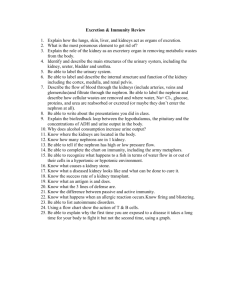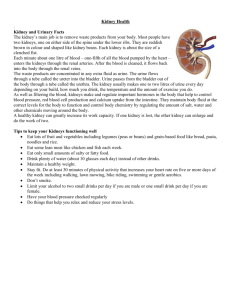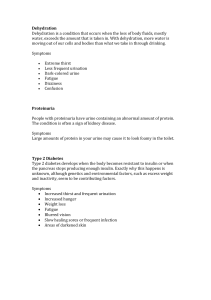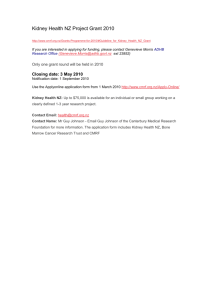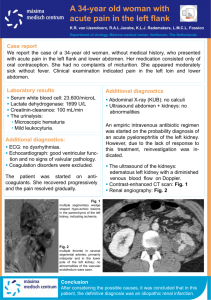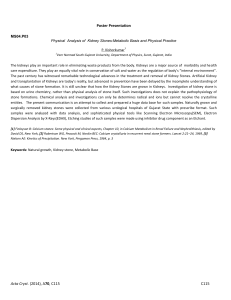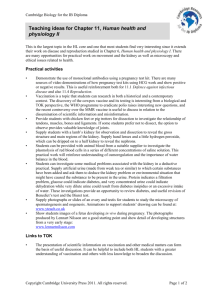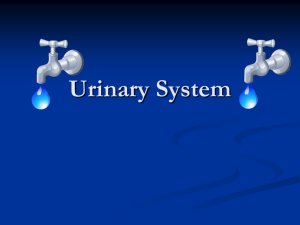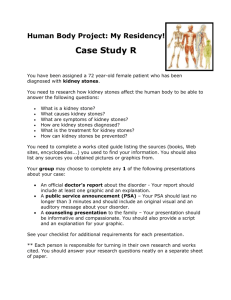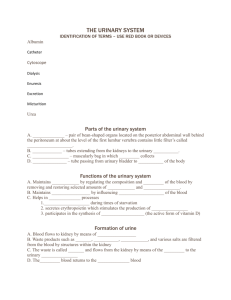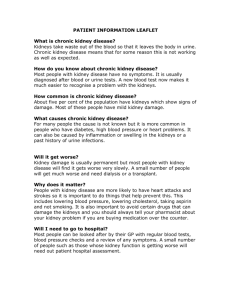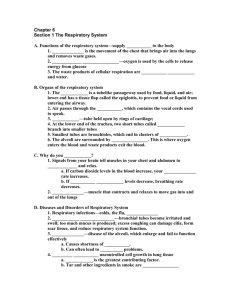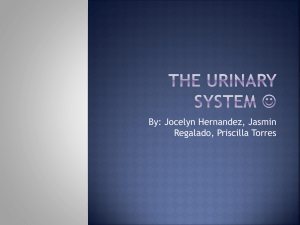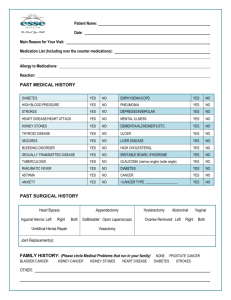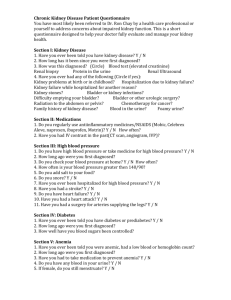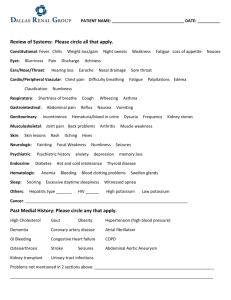Horseshoe Kidney.2
advertisement
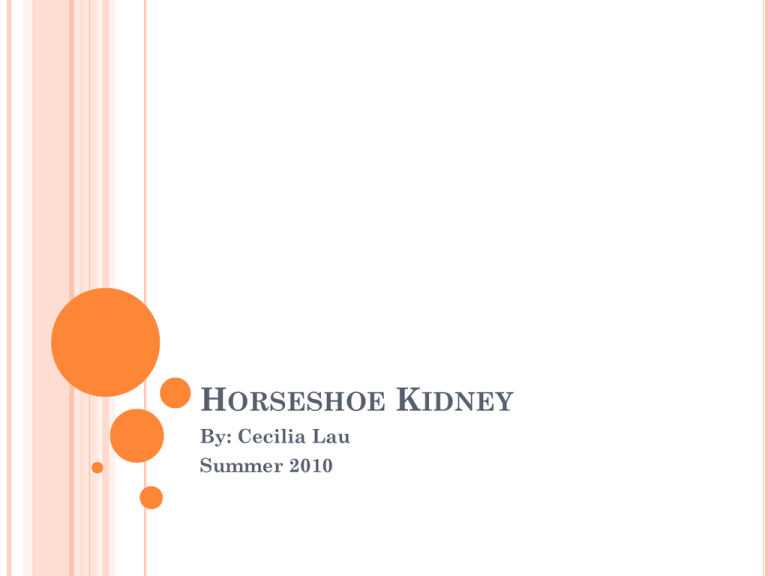
HORSESHOE KIDNEY By: Cecilia Lau Summer 2010 KIDNEY •Normal fetal development •kidneys move into their normal position in the flank area (above the waist) •Horseshoe Kidney •kidneys rise from the pelvic area, they fuse together at the lower end or base, forming a "U" shape at the isthmus •1/3 of individuals •cardiovascular system •CNS •genitourinary system HORSESHOE KIDNEY most common disorders seen with horseshoe kidney Turner syndrome Trisomy 18 COMPLICATIONS kidney stones hydronephrosis Symptoms abdominal mass, poor weight gain, decreased urination, urinary tract infection Wilm's tumor renal cancer hydrocephaly and/or spina bifida various cardiovascular, gastrointestinal, or skeletal problems agonizing flank pain Restlessness, sweating, nausea and/or vomiting, blood in urine, urinary frequency, chills, fever, cloudy urine 1/3 asymptomatic DIAGNOSIS renal ultrasound ● ●voiding cystourethrogram (VCUG) ●blood tests ●urine tests ●intravenous pyelogram (IVP) TREATMENT No symptoms Supportive treatment: age, overall health, and medical history the extent of the disease antibiotics (to treat an underlying infection) surgical intervention (for symptomatic kidney stones) MG THANK YOU!



